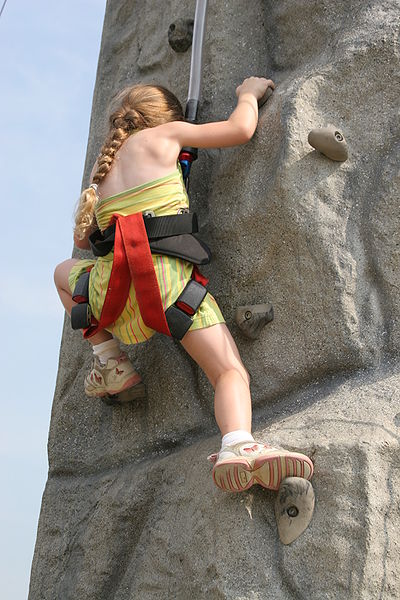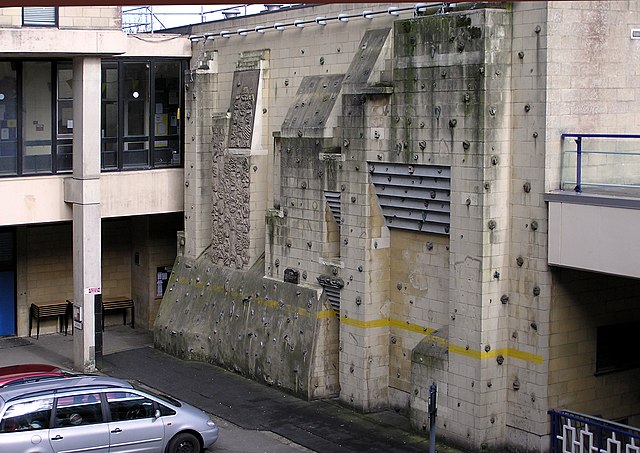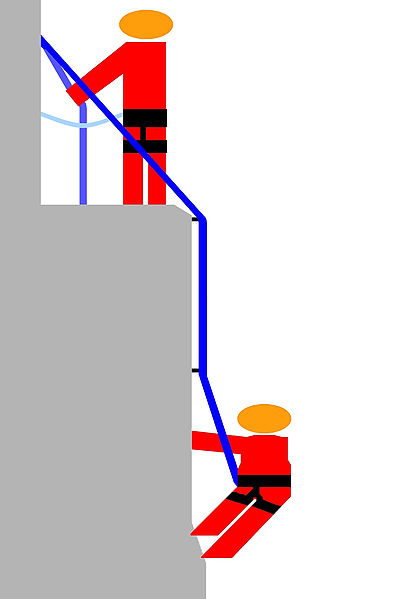A climbing wall is an artificially constructed wall with manufactured grips for the hands and feet. Most walls are located indoors, and climbing on such walls is termed indoor climbing. Some walls are brick or wooden constructions, but on most modern walls, the material most often used is a thick multiplex board with holes drilled into it. Recently, manufactured steel and aluminum have also been used. The wall may have places to attach belay ropes, but may also be used to practice lead climbing or bouldering.
Boulder Dash
Climbing a rock-textured wall with belay, modular hand holds, incuts, and protrusions
An outdoor climbing wall at the University of Bath, England
Bouldering at an indoors bouldering centre in Pasila, Helsinki, Finland
Lead climbing is a technique in rock climbing where the lead climber clips their rope to the climbing protection as they ascend a pitch of the climbing route, while their second remains at the base of the route belaying the rope to protect the lead climber in the event that they fall. The term is used to distinguish between the two roles, and the greater effort and increased risk, of the role of the lead climber.
Leader (top) belayed by the second (below)
Leader (top) belaying the second (below)
Lead climber falling with a modest runout; the belayer is not visible but has clearly gripped the rope.
Janja Garnbret in the 2018 IFSC Climbing World Championships








